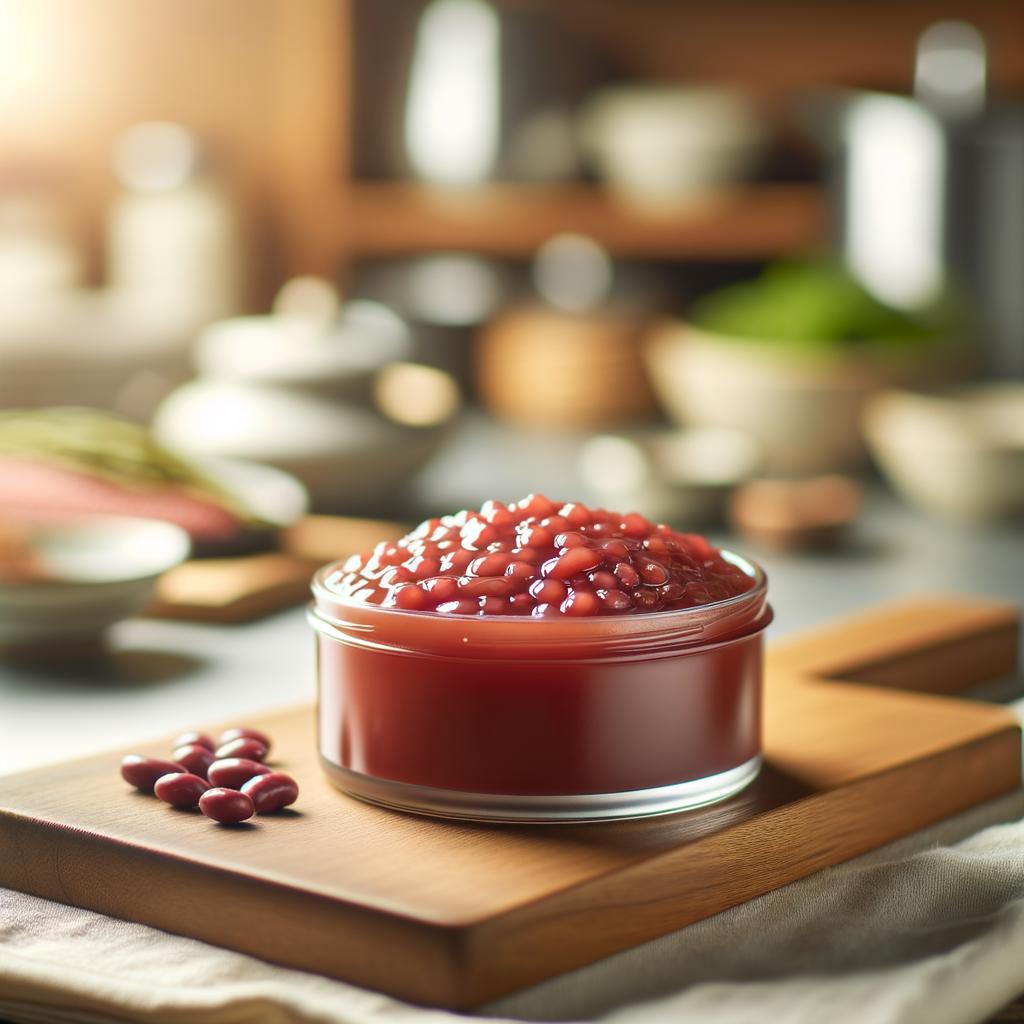Red Bean Paste

Description Red bean paste, known as anko in Japan, is a sweet, velvety ingredient that's as rich in color as it is in flavor. It's derived from adzuki beans, which are small, reddish-brown beans native to East Asia. The beans are boiled until tender, then sweetened with sugar and mashed into a smooth paste. The result is a deep, burgundy paste with a texture that's both creamy and slightly grainy. Its flavor profile is a delightful paradox of earthy sweetness, a unique characteristic that sets it apart from other sweet bean pastes.
Primary Uses Red bean paste is a versatile ingredient, used predominantly in East Asian cuisines, particularly in Japanese, Korean, and Chinese dishes. It's the star ingredient in sweets like daifuku (Japanese rice cakes), anko dango (sweet dumplings), and mooncakes (Chinese pastries). In Korea, red bean paste is a key component in patbingsu, a popular shaved ice dessert. Beyond its culinary uses, red bean paste holds cultural significance in these regions, often used in celebrations and festivals symbolizing good luck and prosperity.
History The history of red bean paste is as rich as its flavor. Its use dates back to the Nara period (710-794 AD) in Japan, where it was considered a luxury item, served exclusively at the imperial court. Over time, its popularity spread throughout Asia, each region adapting it to their unique culinary traditions. The paste became a symbol of celebration, featuring prominently in festivals like the Chinese Mid-Autumn Festival and the Japanese Hinamatsuri or "Girls' Day". A popular folklore in Japan associates red bean paste with warding off evil spirits, thanks to its vibrant color.
Nutritional Information Red bean paste is not just a delight for the taste buds, but also a nutritious treat. It's rich in fiber, promoting digestive health, and packed with essential minerals like potassium, iron, and zinc. The adzuki beans from which it's made are a good source of protein and have a lower calorie count compared to other beans, making red bean paste a healthier alternative to other sweeteners. However, due to its high sugar content, it should be consumed in moderation. Despite this, when compared to similar sweet pastes, red bean paste often comes out on top for its balance of flavor, cultural significance, and nutritional value.

